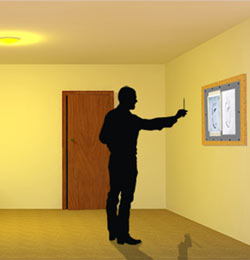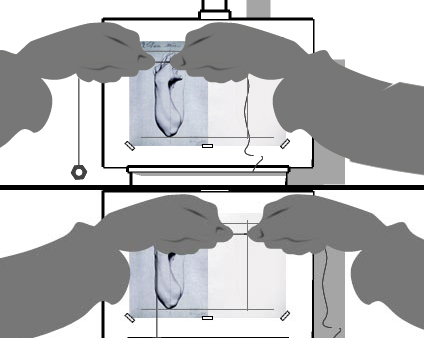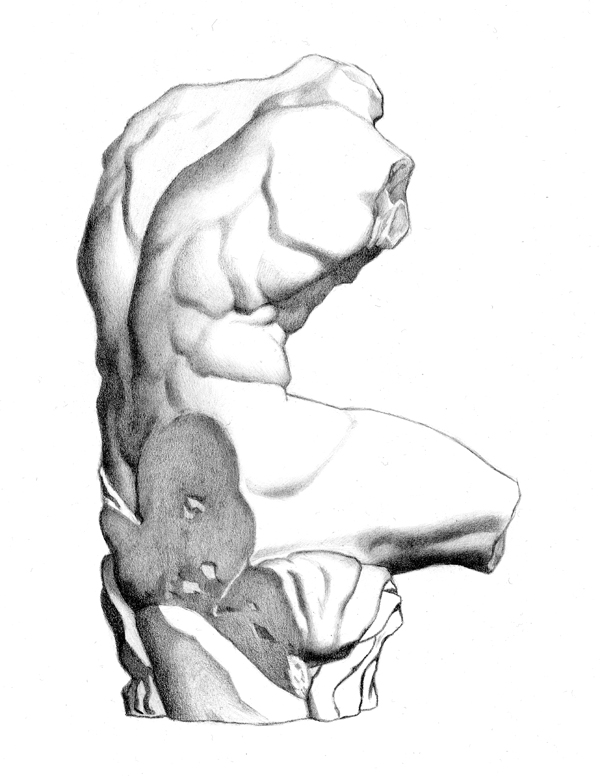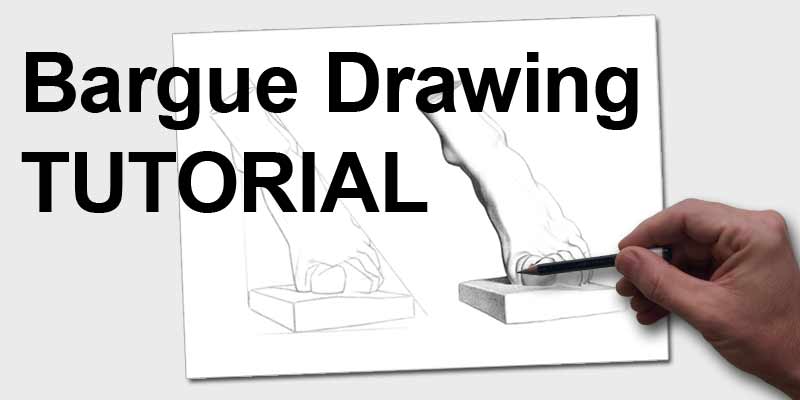The Charles Bargue Drawing Course is the collected set of knowledge from centuries of academic art education. It is beeing used in classical art academies throughout the world. It was developed and widely used in the mid 19th century as a foundational exercise for fine art training. Since the comeback of traditional values art schools and academies have been formed which follow this proven approach of the great masters. This approach is an essential process in understanding the principles of shape, proportion, value and form.
Charles Bargue is mostly remembered for his Cours de dessin, one of the most influential classical drawing courses conceived in collaboration with Jean-Léon Gérôme. The course […] was to guide students from plaster casts to the study of great master drawings and finally to drawing from the living model.
Among the artists whose work is based on the study of Bargue’s platework is Vincent van Gogh, who copied the complete set in 1880/1881, and (at least a part of it) again in 1890.

Learn Bargue Drawing at home
In a classical atelier you start by copying two dimensional references – the Bargue plates – as perfect as possible. This teaches you to see distances, lengths and angles as well as shading. First you would make few general guidelines – the rest is built up through observation and correction. This exercise can easily be done at home – even in a very small room and with a regular room light. You even do not need an easel.
See the list below for your needed materials. As you can see this is no rocket science and most of the necessary materials should be available in any household. For the setup you need to be little creative depending on your circumstances. For example you can paste the reference and the drawing paper on your room door – this most likely has the desired smooth finish.
Need materials:
- A large board with a smooth finish (should be large enough to tape two sheets of paper – the reference and the drawing paper – besides each other)
- Sheet of paper – regular printer paper should be sufficient for this exercise
- The printed reference (download these HiRes files here)
- Artists tape*
- Pencils in different grades* (2H, HB & 2B are sufficient)
- Kneaded eraser*
- Measuring device such as a knitting needle or a thread
- Ruler (only for the initial preparatory steps)
*Affiliate link
Preparation
As a righty you need to tape the printed reference on the left hand side of your panel with artists tape. Your drawing paper should sit on the right hand side. As a lefty you do it vice versa.
Now make a straight vertical line through the middle of your reference. If your reference is a symmetrical object the middle is easy to determine – if you have a non-symmetrical reference just estimate a middle. Also draw a straight vertical line through your drawing paper. Don’t press too hard with the pencil since you need to erase these guidelines later!
Make two horizontal lines across the reference and your drawing paper – one on the topmost point of your reference and one on the bottommost point.

Execution
Now hold your measurung device in front of your reference, squint one eye and measure from the middle line to the leftmost point (see the following picture; in this example a thread was used). Keep this distance and hold the measuring device on the middle line of your drawing paper. Slightly draw a line where you determine the width. Double check by doing this process again. If you did not transfer the distance correctly, just erase your first estimation and make a better one.

Do these steps with the most prominent points of the reference. Always double check. This process seems to be tedious but it is worth it. It is easier to change things in the beginning stages of the drawing than towards the end so double checking is crucial.
After you have determined a couple of points, connect them with straight lines to have a simplified image of your reference. The Bargue plates show how this is meant exactly.
You can now dispense your measuring device since it is the learning-to-see what you are after…
Now the fun part starts: make your drawing match as perfect as possible to the reference just by using your eye! Lines that you are not sure about should be made lightly. Work as hard as you can. It is not unusual if you need a couple of hours on this drawing. The more you practise the faster you get.
See the steps of this process:

Video instructions
Watch this video series by The DaVinci Initiative to see the execution of a Bargue Drawing. Just let this playlist play one video after the other. The instructions given may differ from those described above. Feel free to learn your lessons from all informations and adapt them to your needs.
I’d like to also point you to a video I made years ago with the former Angel Academy student Michael Milosevic. In this video he speaks in general about the learning process you make as a student by drawing from a Bargue reference:
Bargue Drawing without measuring devices

Of course you can also try to make a Bargue Drawing without precise measuring. Especially when you have acquired enough confidence in seeing distances, lenghts and values after the method described above. I did this to test a more common setup everyone has at home. The reference on my monitor and the drawing paper on a clip board on my lap I started to measure by eye. I made the measurements as precise as possible and I did not hesitate erasing lines that were wrong.
It is a good drawing and I am satisfied with the result but it has some flaws. Why? Well, first the height of the most important points is about right (topmost point, angle of hip/thigh, bottommost point) and secondly the shading is really close to the reference (unfortunately the scanner can’t replicate the drawing as it appears in reality; it lets the drawing seem very grainy and halftones appear lighter in the scan). All in all it works as a good drawing.
The drawing took me about 10 hours I’d guess. Getting the shading right was the most time consuming – especially the filling of the little valleys of the paper’s structure.
Let’s compare the drawing with the reference

In the picture below you can see the differences between my drawing and the reference. As described in this post I overlayed the reference over the scan in Photoshop and set the layer style to “Difference”. The black lines are my drawing and the white lines are those of the reference. While my height measurements where quite exact, the width measurements where too narrow.
While this was a neat exercise for me the end result is not the level you would do a Bargue drawing at a classical atelier. The Bargues made at an atelier are done as perfect copies of the reference but this takes much more time than the 10 hours that I spent on this drawing.
Here are my videos on how you can compare the drawing with the reference using Photoshop or the free software GIPM (for a How-To with the free web app PIXLR click here)

This is super. I can not afford to go to the Bargue School in Toronto or anywhere else at this point and I wish this formal approach was part of my Art education.
Hello Tina.
As you can see this all is no witchcraft and the materials aren’t expensive. What is expensive is the instruction by a master. So in case you’d like to make some Bargue drawings you can overlay your drawing with the reference for comparison, like I describe here:
http://classicalatelierathome.com/substitutes-for-a-master-use-technology-to-improve-your-artistic-skills
This is really useful. What I would like to ask is the next step after the barque drawings ( among your sources) ?
Get some Plaster Casts and do the same as with the Bargue Drawings. Read more on Cast Drawing here: https://classicalatelierathome.com/all-about-the-academic-cast-drawing-the-best-resources
Hello. I see that there are 11 photos in the reference file. Should an artist copy all the ones from the book to be able to get to painting or are 11 enough? How many drawings do artists copy in an atelier?
Hello.
Those 11 references should be enough to select some for your exercises. Start with a simple one and progress to the complexer ones. I can imagine that with the right instruction and persistence one can even skip the Bargues and go right into drawing plaster casts.
It is said that Van Gogh copied the whole course twice. This is definetly not worth it to do so.